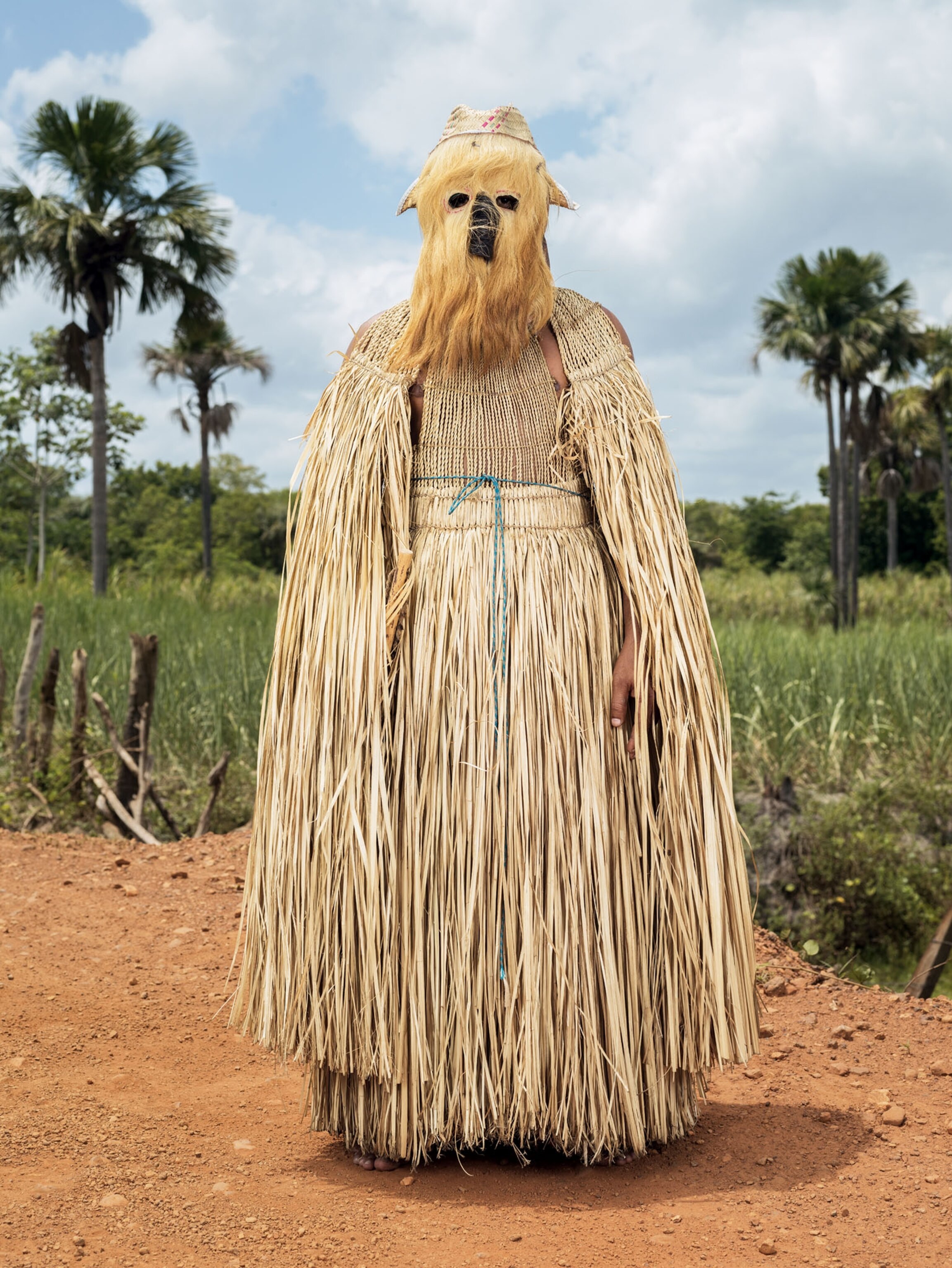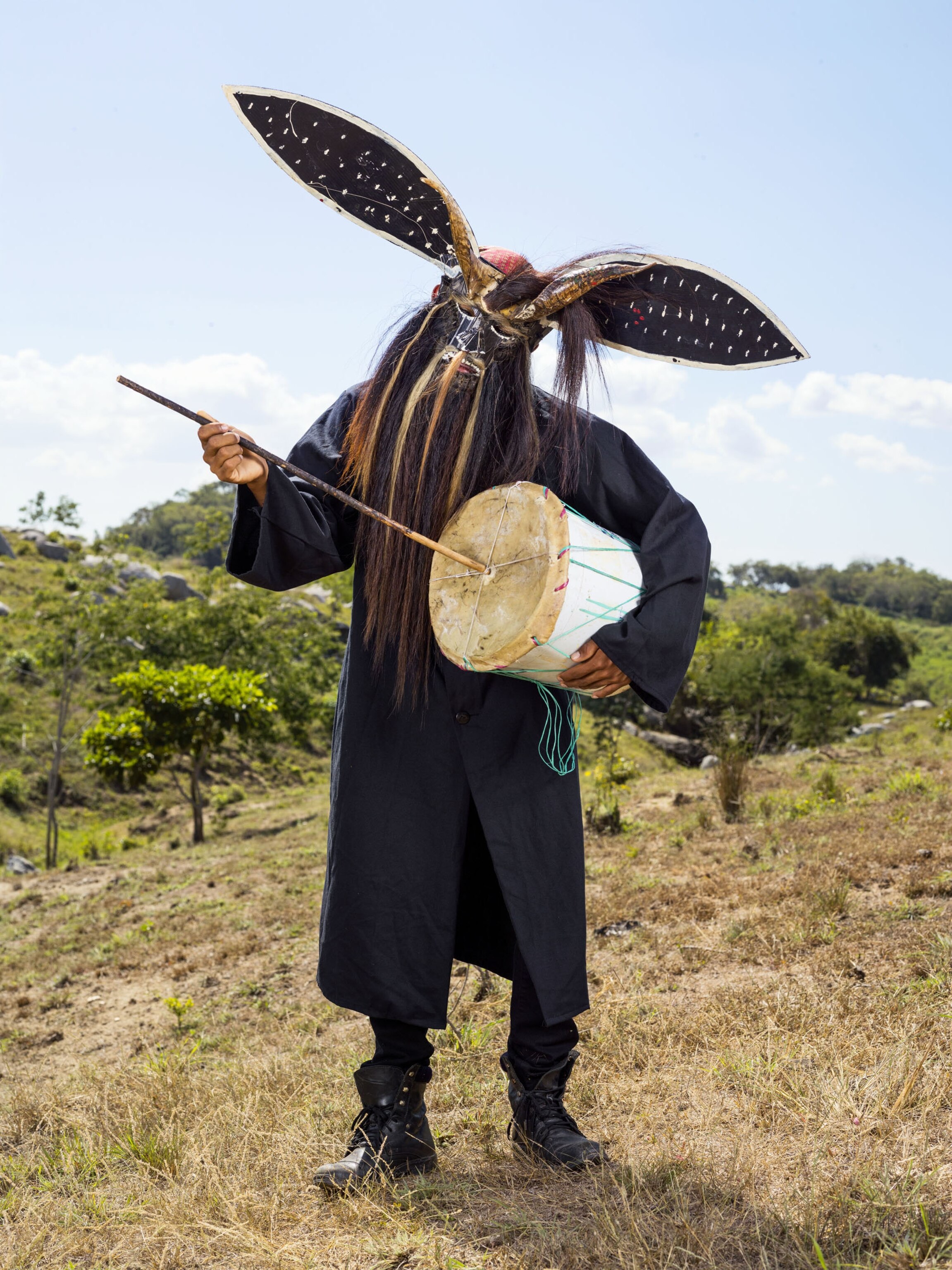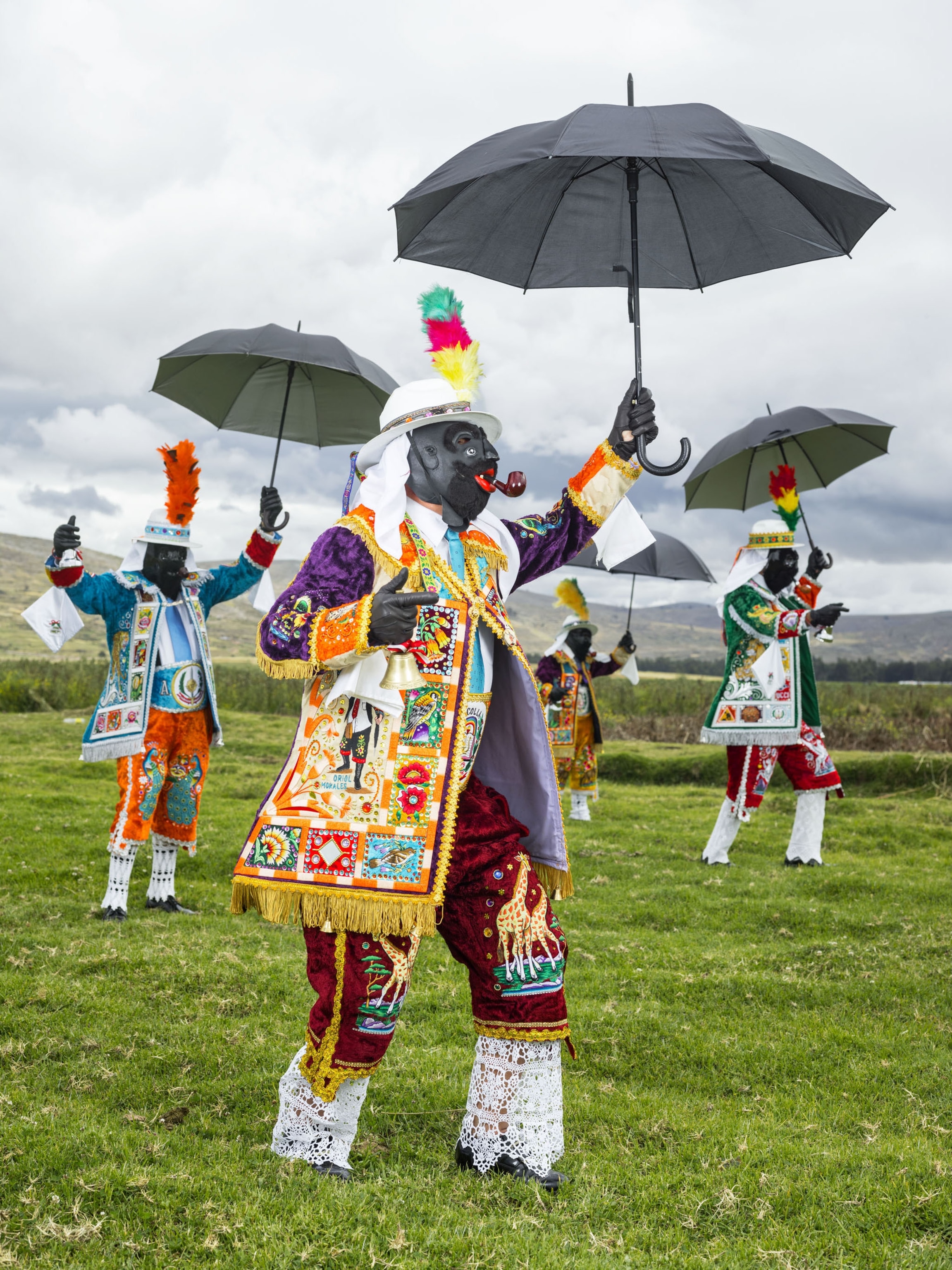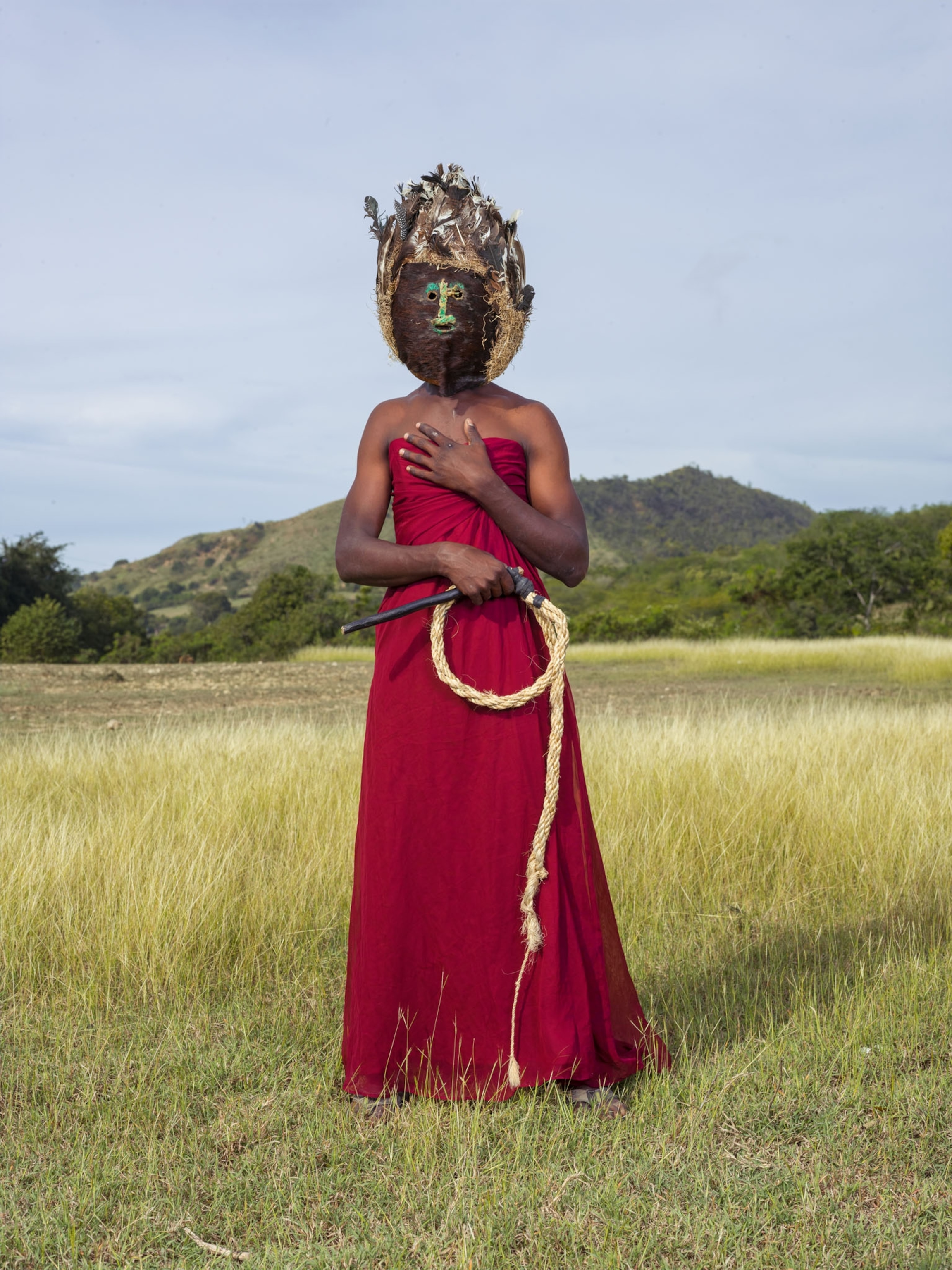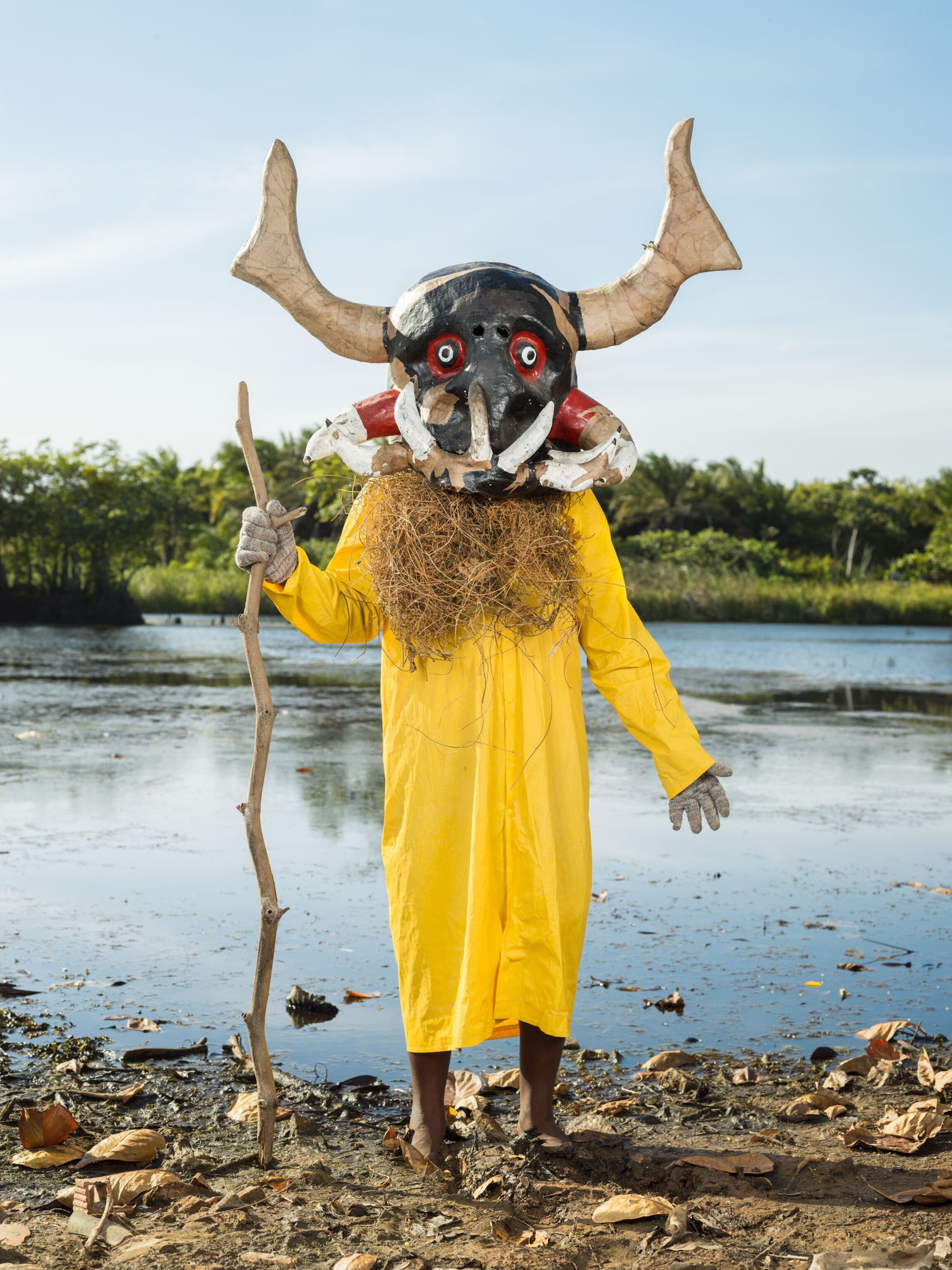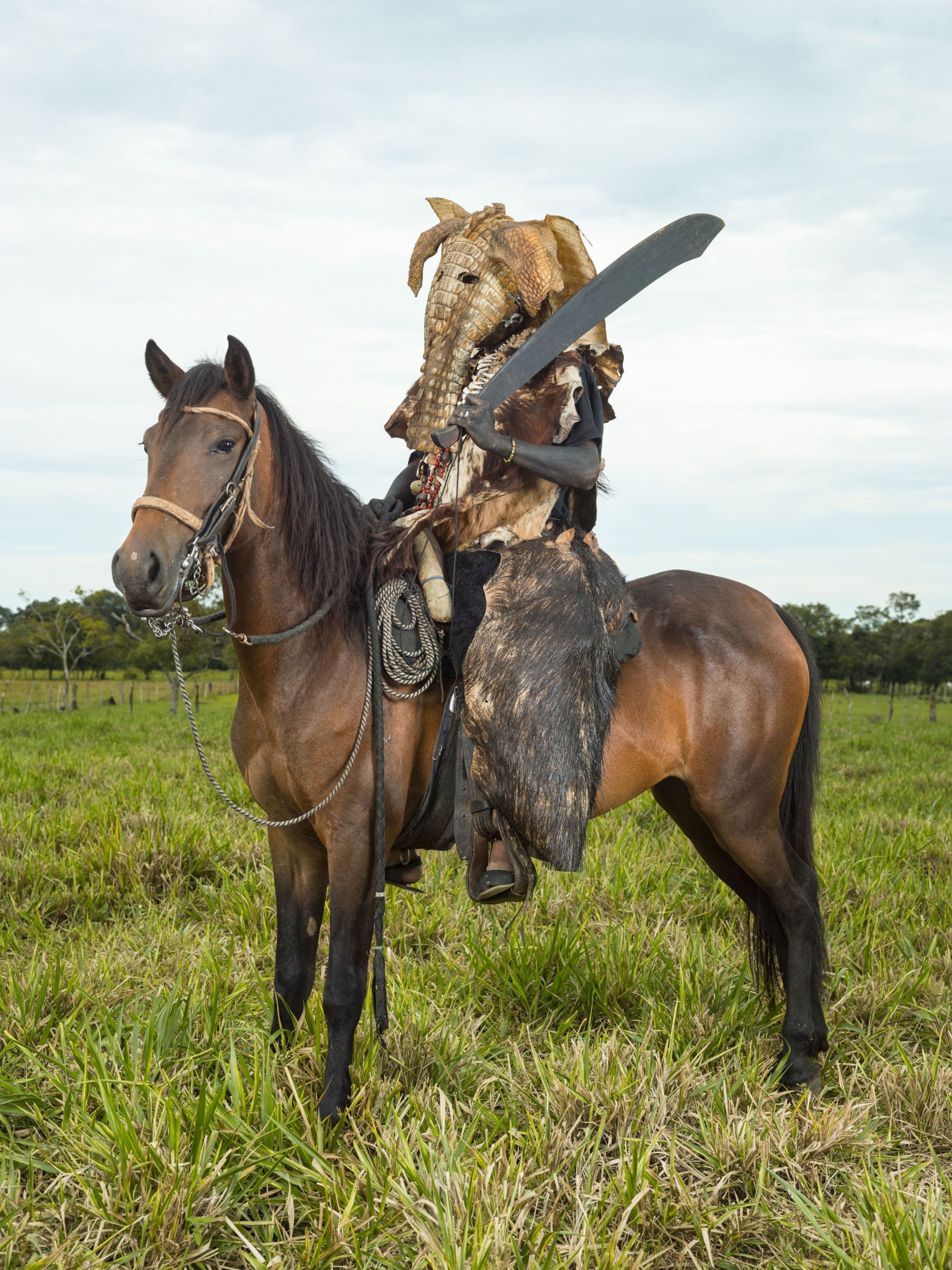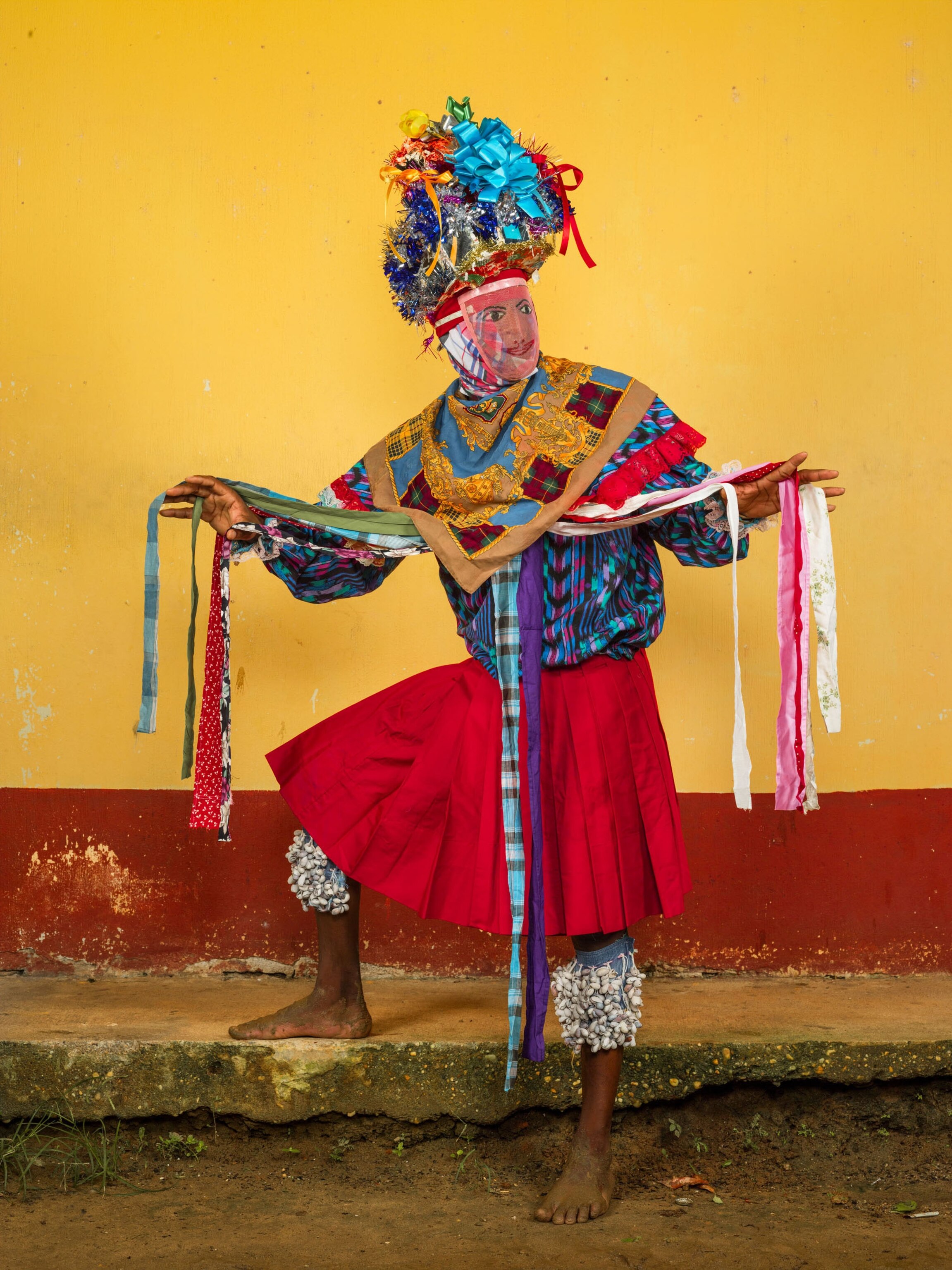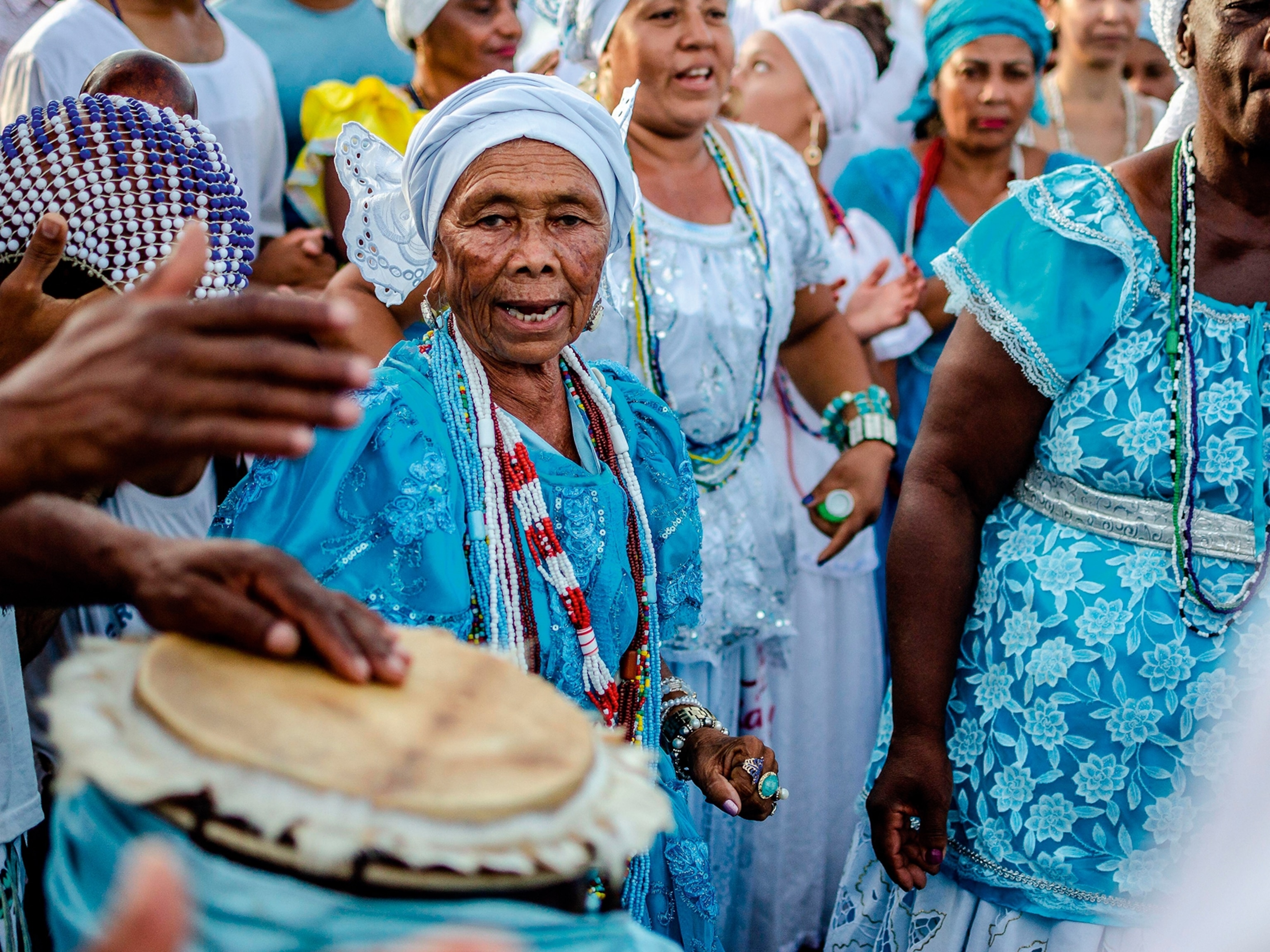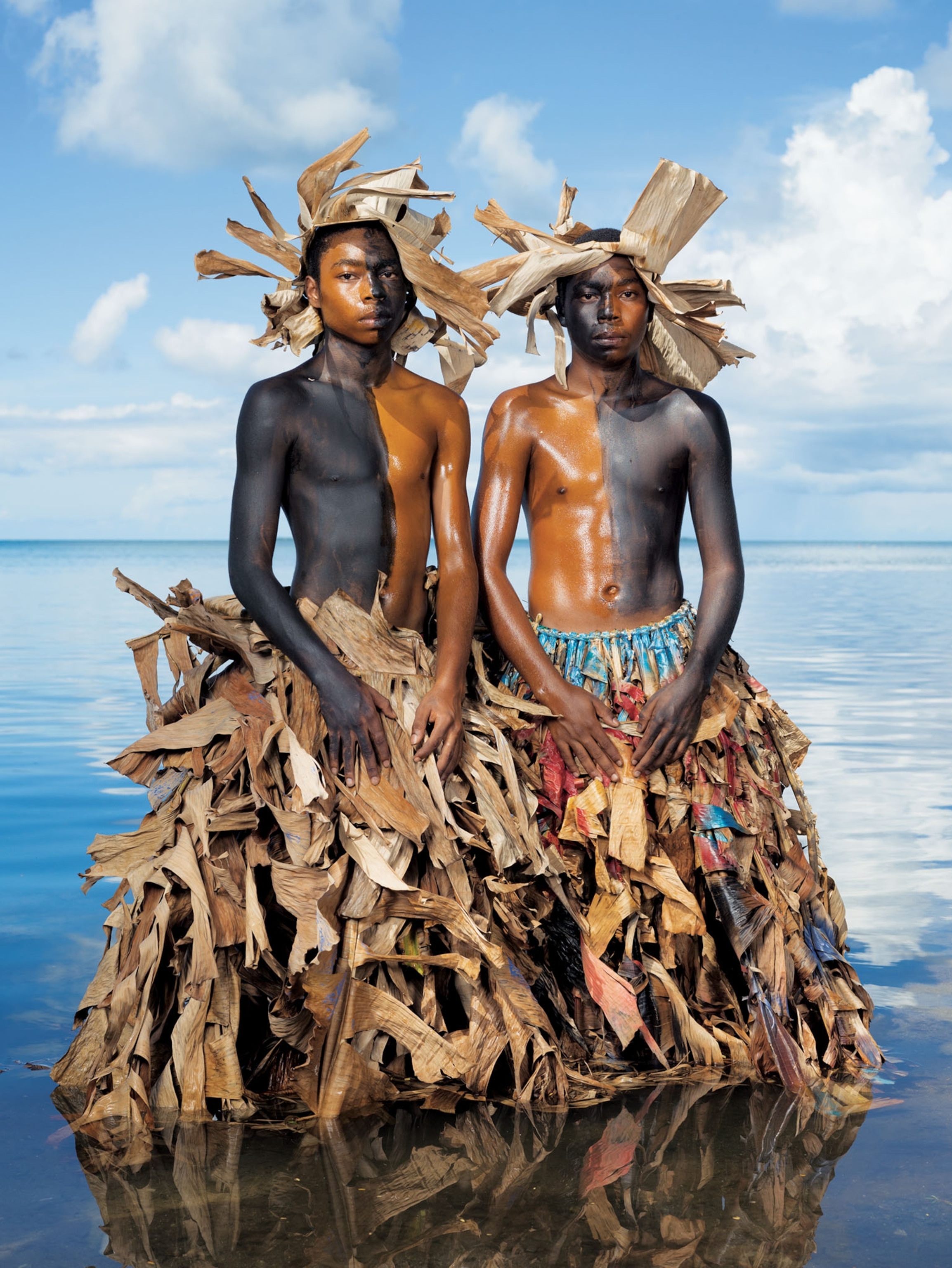
Rituals of spirited rebellion
Carnival and other masquerade celebrations in the Americas honor African, Indigenous, and European roots—and take jabs at former oppressors.
During a trip to Haiti a few years ago, I traveled off the beaten path and visited the southeastern port city of Jacmel, where Kanaval—the Haitian Creole name for Carnival—is celebrated the week before the National Carnival in Port-au-Prince.
Unlike festivities centered around méringues, as Carnival tunes are called in the French-speaking nation, Jacmel offers a more homespun experience. From boys caked in black soot to the sound of rara—the Vodou rhythms that are a mainstay of Carnival celebrations in Haiti—to musicians beating drums or blowing trumpets made from recycled metal and bamboo horns, each rhythm tells its own story as it sends you dancing. I was awestruck by the wild artistry that floods the town’s narrow streets. There were frighteningly beautiful interpretations of the devil, large mythical animals, and grotesque-looking masks made from papier-mâché.
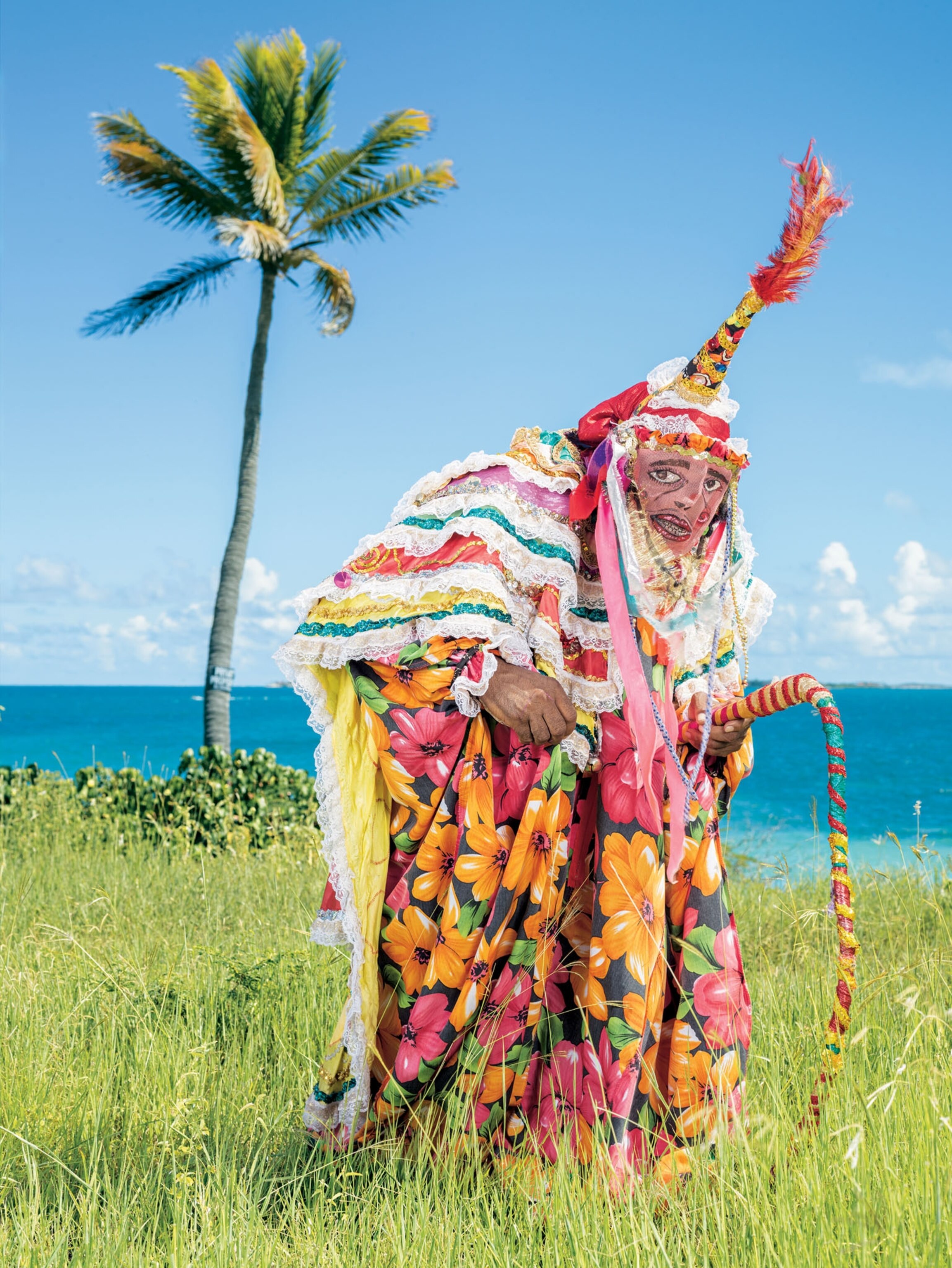
For some, Carnival season, especially Mardi Gras in New Orleans, means body-baring excess, bead throwing, and a raucous free-for-all where debauchery and excessive drinking are encouraged. But in parts of the Caribbean, Carnival—known as Carnaval in Brazil—is more than the revelry that has turned such festivities into a glittery tourist draw. It’s an artistic space, a public bullhorn, an unapologetic expression of cultural identity and empowerment by descendants of enslaved Africans. Forbidden from worshipping their deities or participating in the 18th-century pre-Lenten masquerade balls of their French and British masters, slaves merged African traditions and folklore with colonial rituals to create their own fete.
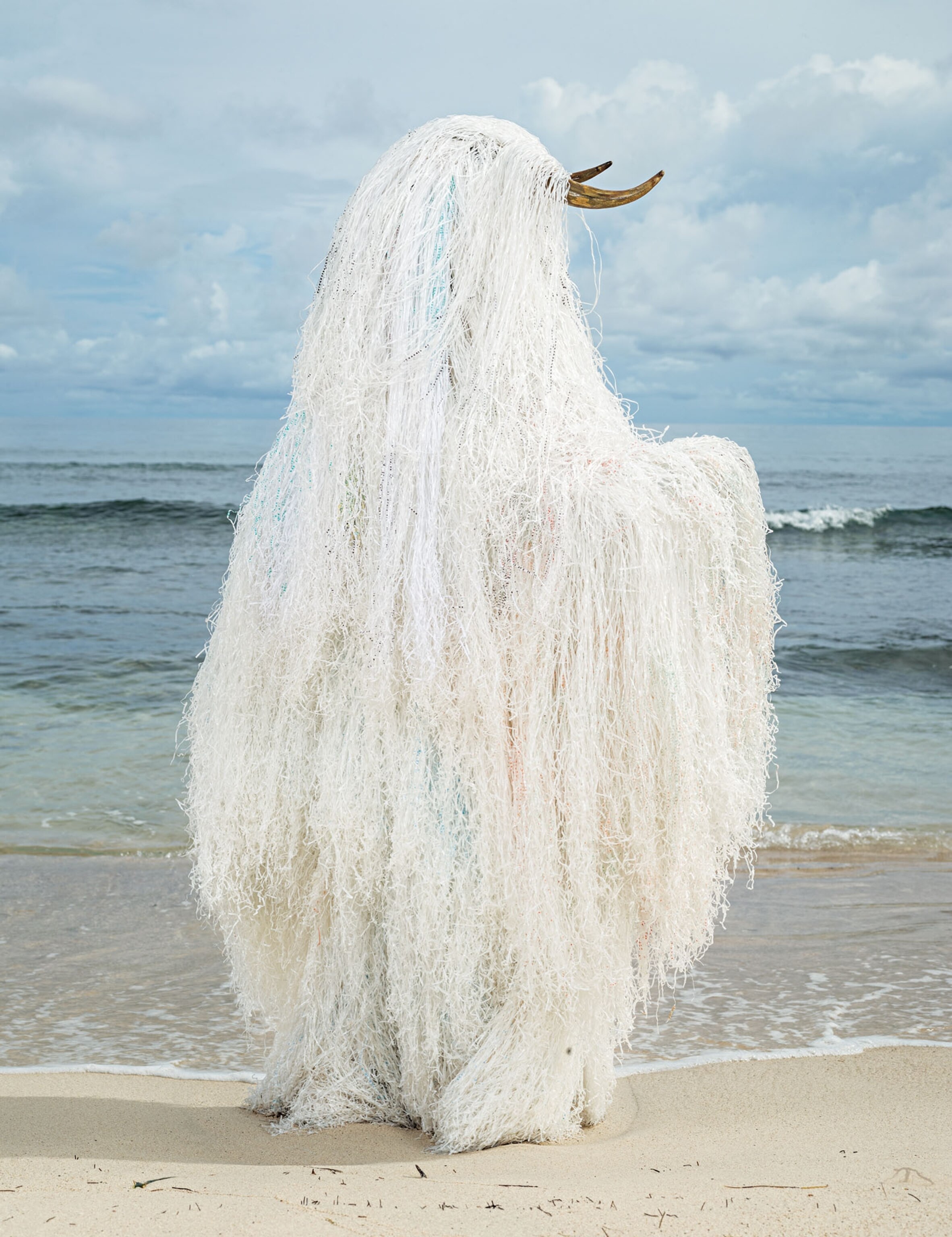
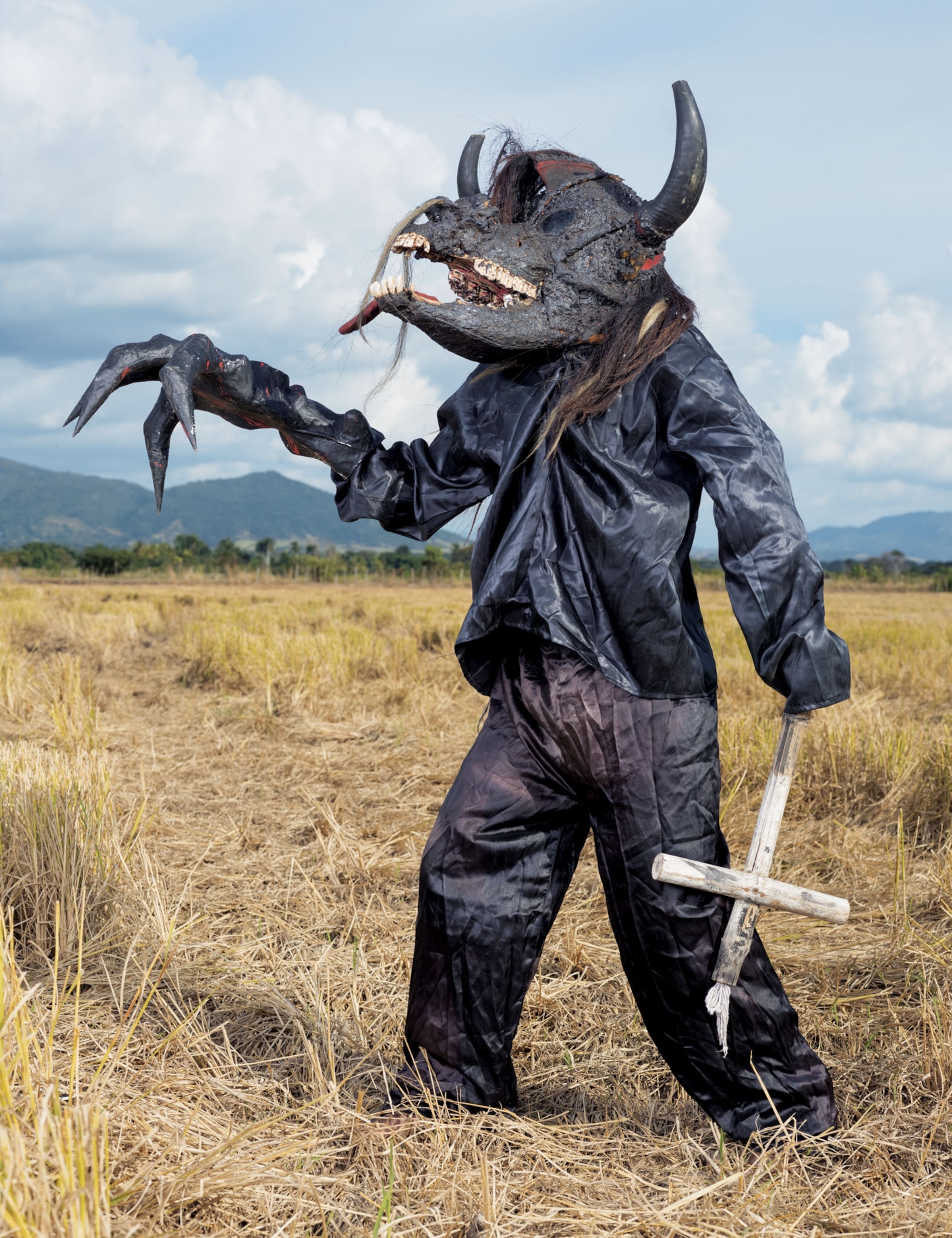
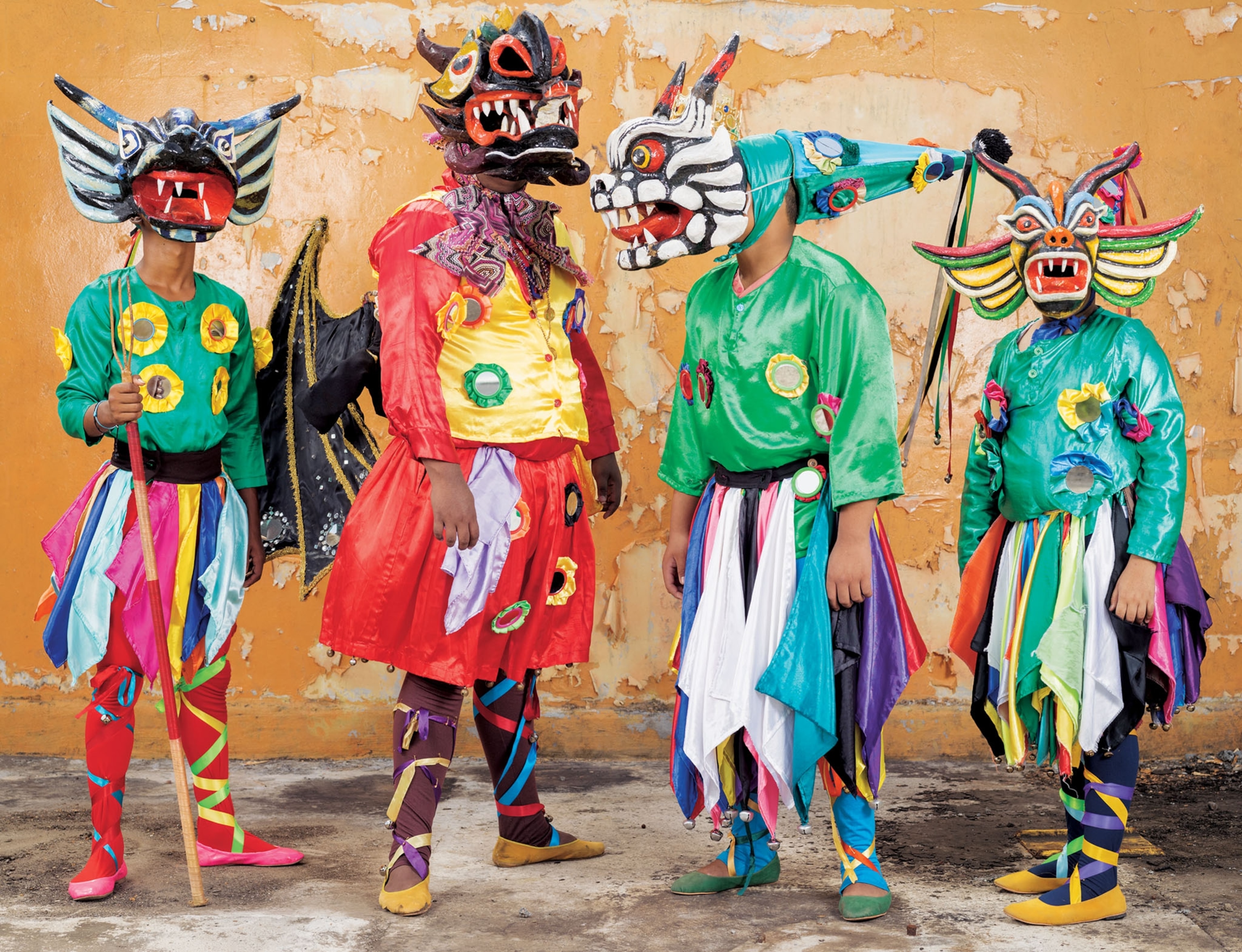
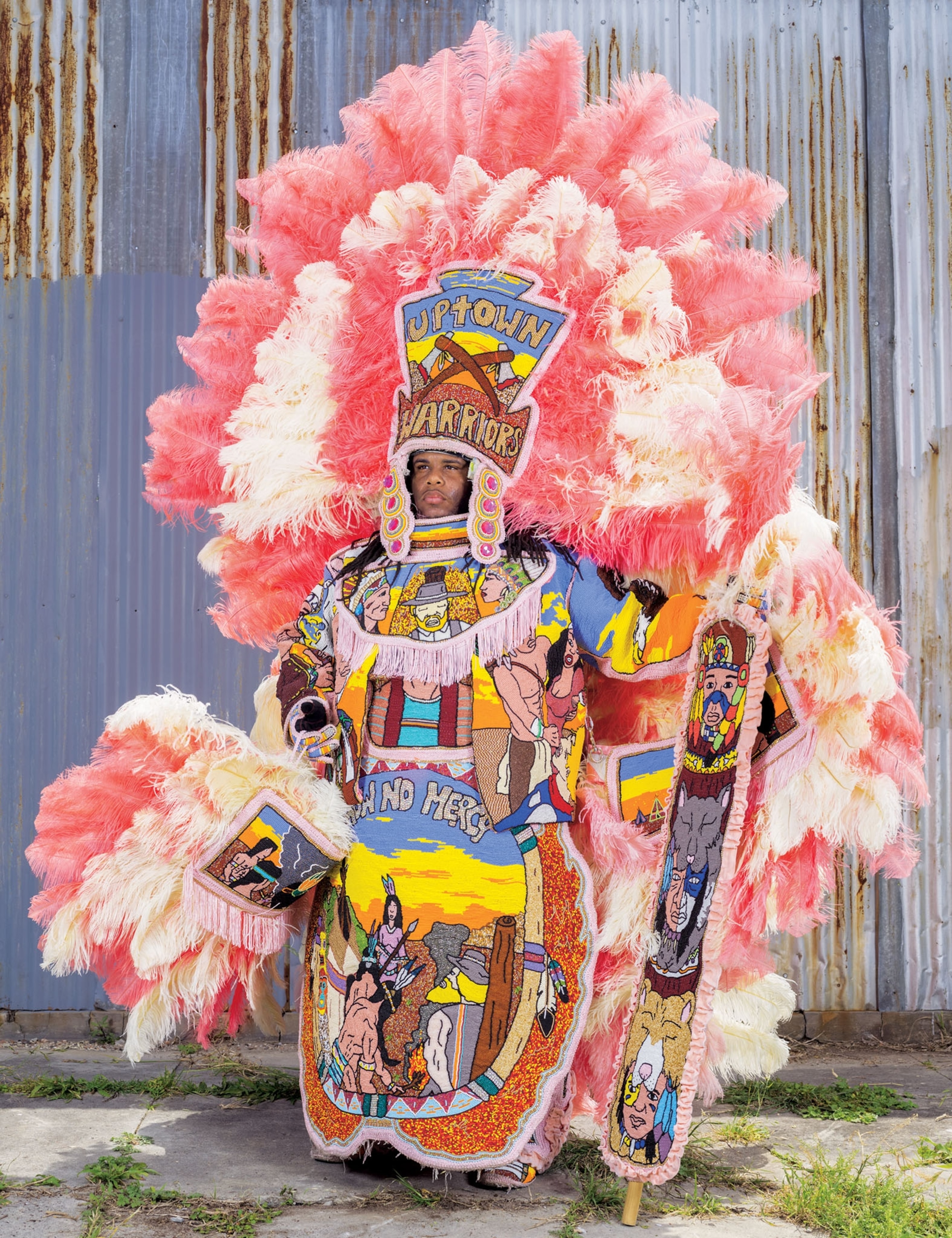
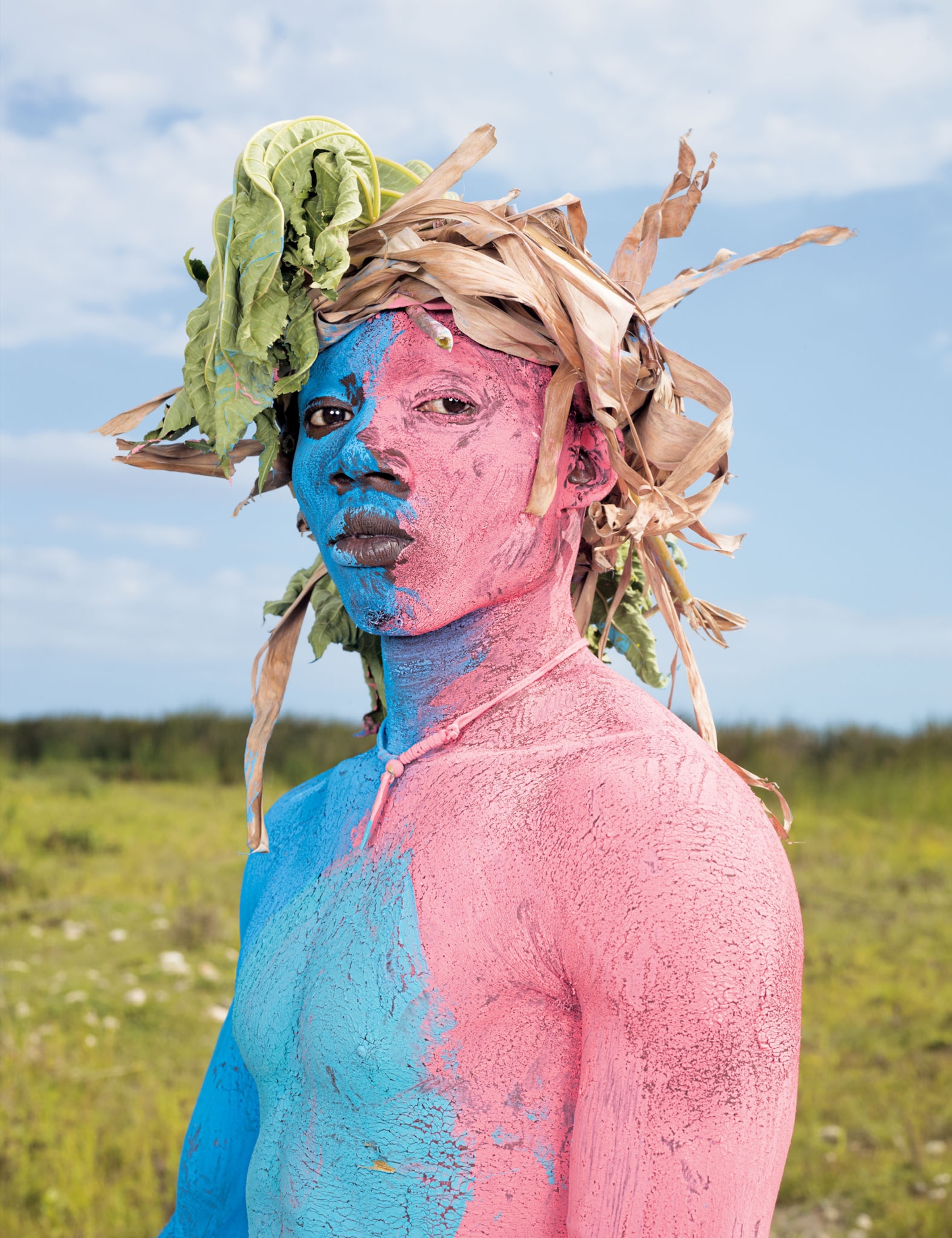
Today celebrations like Corpus Christi, Three Kings’ Day, and Day of the Dead take different forms across the African diaspora and may be hosted at other times of the year, but the festivities have common elements. Colorfully and wildly dressed characters blend Christianity, folklore, and indigenous perspectives in a ritual of spirited rebellion. With their identities disguised behind ornate masks, revelers tell stories, release frustrations, and in places like Haiti, agitate for political and social change against a backdrop of pulsating pageantry and parody. Costumes and songs provide social commentary and political critique.
“This is a rebellion that is a cultural resistance,” says Henry Navarro Delgado, an associate professor at Ryerson University who has explored the role of fashion in Carnival. “This is an opportunity for them to parade themselves as they really want to.”
Some cover their bodies in paint and mud. Others dress in the vivid colors of African deities such as the fiery red and black of Ogun, the African god of war and iron, or the blue and gold of Erzulie Dantor, the goddess of jealousy and passion in the Haitian Vodou paradigm.
A central figure in many Carnivals is the mischievous diablo, the devil. In the Dominican Republic he might be a limping trickster parading around with a whip. In Trinidad he’s sometimes a blue devil mocked and beaten by other devils to symbolize the brutality of slavery. And in Panama he’s often the whip-wielding slave master fighting with escaped slaves, the cimarrons, in a traditional Congo dance that celebrates the slaves’ resistance to their Spanish masters. The devil, of course, is bad in a Roman Catholic or European context. But during Carnival, he’s usually the impish spirit who’s needed to balance out the world and shake things up.
No Carnival is complete without the masked dances that capture the relationship between slaves and their colonizers, or in some cases, mock their oppressors.
Many of the dances require training, says Amy Groleau, curator of Latin American and Caribbean Collections at the Museum of International Folk Art in Santa Fe, New Mexico. She notes common themes, representing different social classes and ethnicities and even animals. “The characters have a sacred element to them,” she says.
Whether it’s the animal characters from Colombia or the Qhapaq Negro dance depicting Afro-Peruvians as enslaved laborers arriving with Spanish conquistadores, Carnival is more than just a bacchanal. It’s a symbol of our history and heritage that unites us as blacks, regardless of language or geography.
